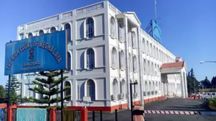Drug use among Meghalaya children reported as early as age 10: Study
A new study has revealed that drug use among children in Meghalaya can begin as early as 10 years old — much younger than the average initiation age of 22 in the rest of the country, and earlier than in neighbouring states like Manipur and Nagaland.

A new study has revealed that drug use among children in Meghalaya can begin as early as 10 years old — much younger than the average initiation age of 22 in the rest of the country, and earlier than in neighbouring states like Manipur and Nagaland.
The qualitative study, published in the April–June 2025 edition of the Indian Journal of Public Health, was conducted by researchers from the Indian Institute of Public Health, Shillong, and the Meghalaya AIDS Control Society. It surveyed 128 people enrolled in opioid substitution therapy across East Khasi Hills, West Jaintia Hills and East Jaintia Hills, along with 17 service providers.
The research found the average age of drug initiation to be 19 years, with over one-third of respondents starting as minors and more than a quarter still in school. More than 91 per cent of users were male, 80 per cent worked in the unorganised sector, and over half had less than 10 years of schooling.
Also Read: NCW chief sounds alarm on rising HIV cases, single motherhood, and domestic violence in Meghalaya
Curiosity, family problems, peer pressure, and stress relief were identified as the main reasons for trying drugs. Heroin emerged as the most frequently injected drug, with daily spending ranging from ₹500 to ₹2,000, and in some cases up to ₹2,500. Respondents cited easy availability through “easy” markets and mobile-based transactions.
The study noted that early initiation increases the risk of long-term addiction and undermines traditional community support systems. It also found that some users transitioned from marijuana or painkillers to heroin, with potent variants such as “black tiger” and “double tiger” becoming increasingly common.
Researchers called for urgent outreach in schools and community spaces to prevent early drug initiation and address the rising trend.
Copyright©2025 Living Media India Limited. For reprint rights: Syndications Today









